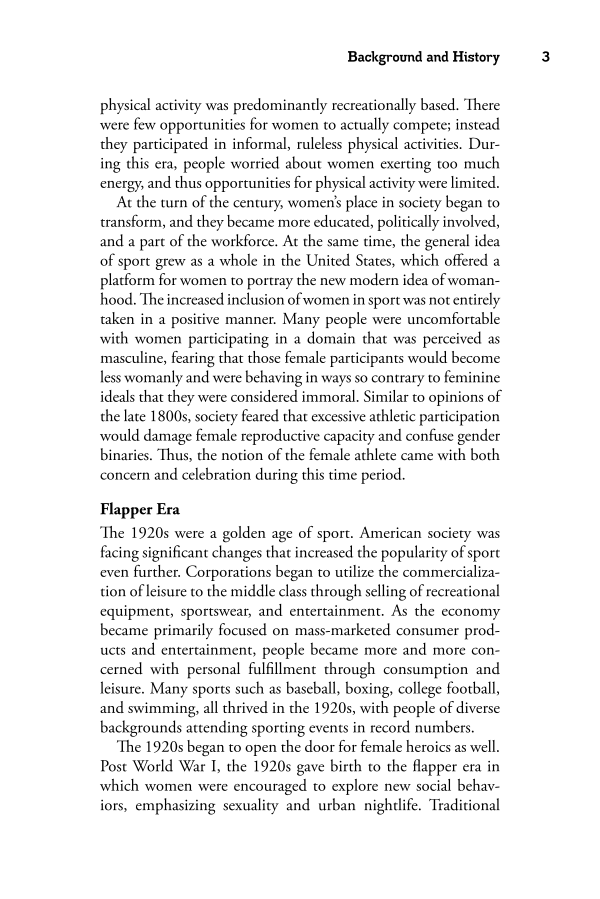Background and History 3 physical activity was predominantly recreationally based. There were few opportunities for women to actually compete instead they participated in informal, ruleless physical activities. Dur- ing this era, people worried about women exerting too much energy, and thus opportunities for physical activity were limited. At the turn of the century, women’s place in society began to transform, and they became more educated, politically involved, and a part of the workforce. At the same time, the general idea of sport grew as a whole in the United States, which offered a platform for women to portray the new modern idea of woman- hood. The increased inclusion of women in sport was not entirely taken in a positive manner. Many people were uncomfortable with women participating in a domain that was perceived as masculine, fearing that those female participants would become less womanly and were behaving in ways so contrary to feminine ideals that they were considered immoral. Similar to opinions of the late 1800s, society feared that excessive athletic participation would damage female reproductive capacity and confuse gender binaries. Thus, the notion of the female athlete came with both concern and celebration during this time period. Flapper Era The 1920s were a golden age of sport. American society was facing significant changes that increased the popularity of sport even further. Corporations began to utilize the commercializa- tion of leisure to the middle class through selling of recreational equipment, sportswear, and entertainment. As the economy became primarily focused on mass-marketed consumer prod- ucts and entertainment, people became more and more con- cerned with personal fulfillment through consumption and leisure. Many sports such as baseball, boxing, college football, and swimming, all thrived in the 1920s, with people of diverse backgrounds attending sporting events in record numbers. The 1920s began to open the door for female heroics as well. Post World War I, the 1920s gave birth to the flapper era in which women were encouraged to explore new social behav- iors, emphasizing sexuality and urban nightlife. Traditional
Document Details My Account Print multiple pages
Print
You have printed 0 times in the last 24 hours.
Your print count will reset on at .
You may print 0 more time(s) before then.
You may print a maximum of 0 pages at a time.
























































































































































































































































































































































